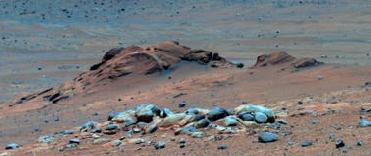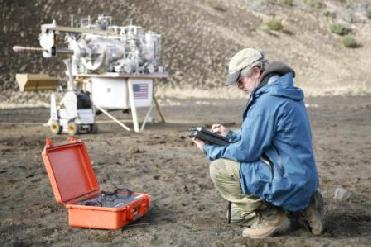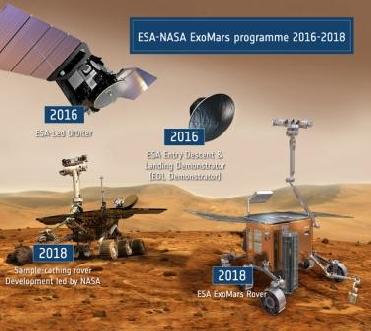
Comanche (left) and Comanche Spur (right) appear reddish-brown in this false-color image from Spirit's Pancam.Photo: NASA/JPL/Cornell University.
ARIZONA (BNS): The Miniature Thermal Emission Spectrometer, or Mini-TES, developed at Arizona State University has found an outcrop of rock rich in carbonate minerals in the Columbia Hills of Gusev Crater on Mars, according to a report published in Science journal.
The instrument is onboard NASA's Mars Exploration Rover Spirit.
Each of the two Mars rovers carries a Mini-TES to identify minerals in rocks nearby.
"The outcrops are very rich in olivine, a volcanic mineral, but they appear to have been soaked in water." said Steve Ruff, research scientist at ASU's Mars Space Flight Facility in the journal study.
According to the study, if the granular material settled over a pre-existing landscape, then the entire stack was flooded with carbonate-rich water, probably from a hydrothermal source.
NASA's other Mars rover, Opportunity, has discovered ample evidence for alteration of rocks by water in Meridiani Planum, on the other side of Mars from Spirit's Gusev Crater.
But the water at Meridiani was strongly acidic. While life can evolve to survive in acidic conditions � such as in some of Yellowstone National Park's geysers and hot springs � few scientists think it can start under those conditions.
The large projections of rocks in the soil of Columbia Hills are about 25 percent carbonate by weight, by far the highest abundance ever seen on Mars.
 Next Article
Next Article












The Indian Air Force, in its flight trials evaluation report submitted before the Defence Ministry l..
view articleAn insight into the Medium Multi-Role Combat Aircraft competition...
view articleSky enthusiasts can now spot the International Space Station (ISS) commanded by Indian-American astr..
view article